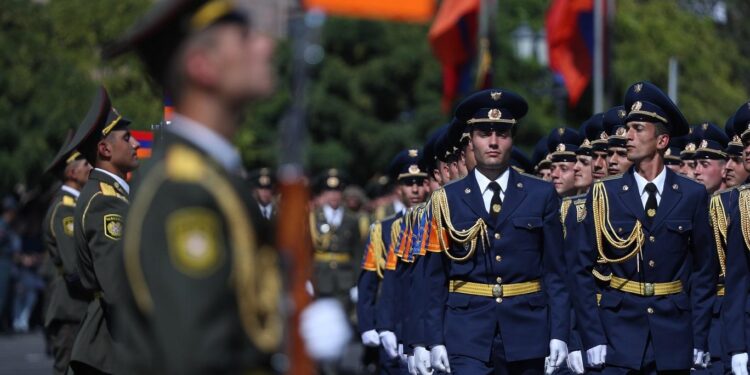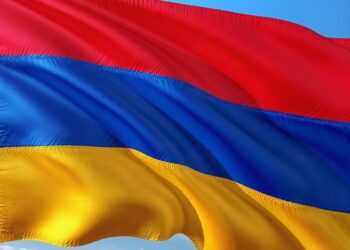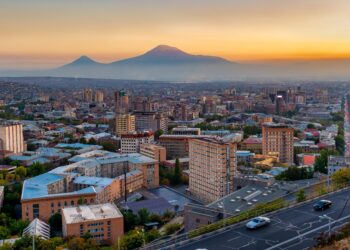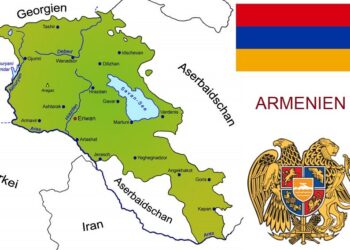Recent Updates on the Armenia-Azerbaijan Dispute: New Video Evidence Surfaces
The ongoing tensions between Armenia and Azerbaijan have escalated substantially with the introduction of video evidence in a Baku courtroom, allegedly showing Armenian military personnel occupying Kalbajar‚ÄĒa region that has been a focal point of contention for years. This footage emerges during a time of heightened diplomatic scrutiny and is part of an extensive investigation into military activities that have shaped the Nagorno-Karabakh conflict. As Azerbaijan continues to assert its authority over territories reclaimed during the 2020 clashes, this new evidence may further strain already delicate relations between the two nations. This article delves into the implications of this footage, current legal proceedings, and provides context regarding Armenia-Azerbaijan relations.
Significant Discoveries: Video Evidence of Armenian Forces in Kalbajar
During recent court sessions, video evidence was presented that reportedly shows Armenian armed forces actively stationed in parts of Kalbajar.Azerbaijani officials claim this footage serves as critical proof highlighting military strategies and troop placements amid escalating tensions over this disputed area. Analysts note that such evidence not only strengthens Azerbaijan’s assertions but also raises critically important questions about international law concerning these military actions.
The reactions within the courtroom varied; supporters from Azerbaijan viewed it as essential for affirming their national sovereignty, while detractors voiced concerns about potential surges in nationalist sentiments leading to renewed hostilities. This scenario illustrates the complex dynamics surrounding this protracted territorial dispute, with both parties eager to leverage any available details to influence their narratives on an international platform.
Impact Assessment: The Occupation’s Influence on Regional Stability
The release of video documentation depicting Armenian forces’ presence has reignited discussions regarding its effects on regional stability amidst ongoing conflicts. Experts argue that such occupations obstruct peace efforts and escalate tensions among neighboring countries. Key repercussions include:
- Increased Militarization: Ongoing disputes lead to heightened military deployments in affected regions, creating a more volatile security landscape.
- Shifts in Political Alliances: Countries may reassess their alliances based on perceived threats or security guarantees, complicating diplomatic relationships further.
- Deterioration of Humanitarian Conditions: Extended occupations can result in humanitarian crises marked by displacement and suffering among local communities.
Considering these developments,regional stakeholders are urged to seek diplomatic avenues aimed at preventing further escalation. Recent dialogues among involved parties indicate a willingness for discussion; though, skepticism remains prevalent regarding potential outcomes. The following table outlines possible strategies for restoring stability:
| Strategy | Plausible Outcome |
|---|---|
| Direct Negotiations | Cultivating dialogue can alleviate misunderstandings and build trust among involved parties. |
| Mediation by Neutral Entities | The involvement of impartial organizations may facilitate peace agreements and enhance mutual confidence. |
| Eeconomic Collaboration Initiatives | Cohesive economic projects can foster interdependence which diminishes conflict likelihood. |
Approaches for Diplomatic Engagement and Conflict Resolution
The recent events surrounding Armenia’s occupation in Kalbajar underscore an urgent need for both nations to engage openly aimed at de-escalation efforts. Diplomatic initiatives should prioritize implementing robust confidence-building measures designed to enhance dialogue channels between Armenia and Azerbaijan through steps such as:
- Create a Joint Communication Task Force:Aimed at ensuring timely information exchange between both sides.
- Establish Ceasefire Monitoring Mechanisms :To guarantee compliance with existing agreements.
- Engage Neutral International Observers :To mediate discussions effectively while verifying adherence.
- Engage Neutral International Observers :To mediate discussions effectively while verifying adherence.
- Facilitating Multilateral Negotiations :Involving key stakeholders alongside regional powers .
- Supporting Economic Cooperation Initiatives :To foster interdependence yielding mutual benefits .
- Promoting Cultural Exchanges :To enhance understanding while reducing animosity across communities .
- Supporting Economic Cooperation Initiatives :To foster interdependence yielding mutual benefits .
Conclusion: Navigating Complex Geopolitical Landscapes
The emergence of video documentation illustrating Armenian armed forces’ activities within Kalbajar has significantly intensified existing tensions between Armenia and Azerbaijan .This development serves as yet another reminder highlighting how intricate geopolitical landscapes often remain volatile due ancient grievances coupled with territorial disputes.As both nations navigate these challenges ,theinternational community observes closely ,hoping towards resolutions prioritizing stability along peaceful coexistence.As developments unfold ,staying updated will be crucial towards comprehending impacts stemming from these events upon regional dynamics alongside lives affected.For now ,the emphasis remains firmly placed upon fostering diplomatic efforts addressing core issues whilst striving towards lasting ceasefires amidst lingering echoes stemming from past conflicts.
















